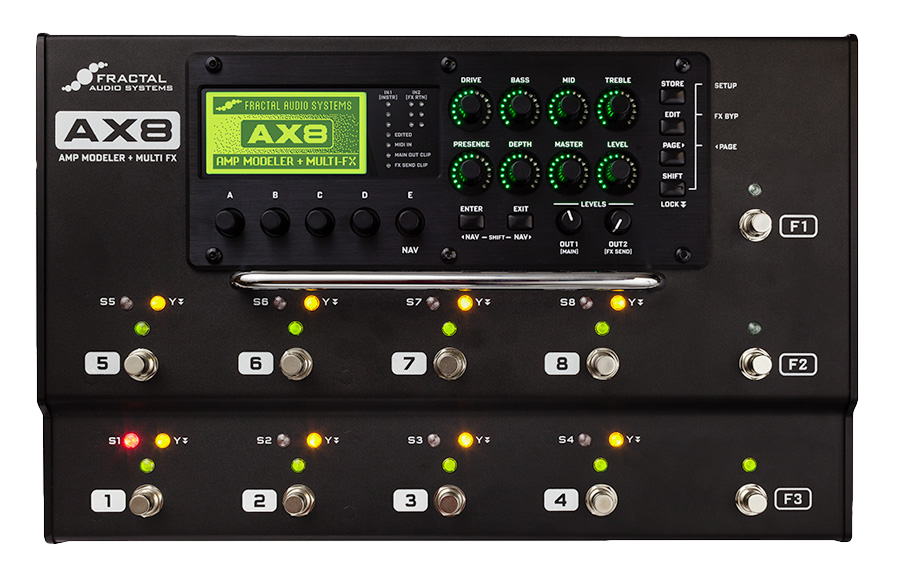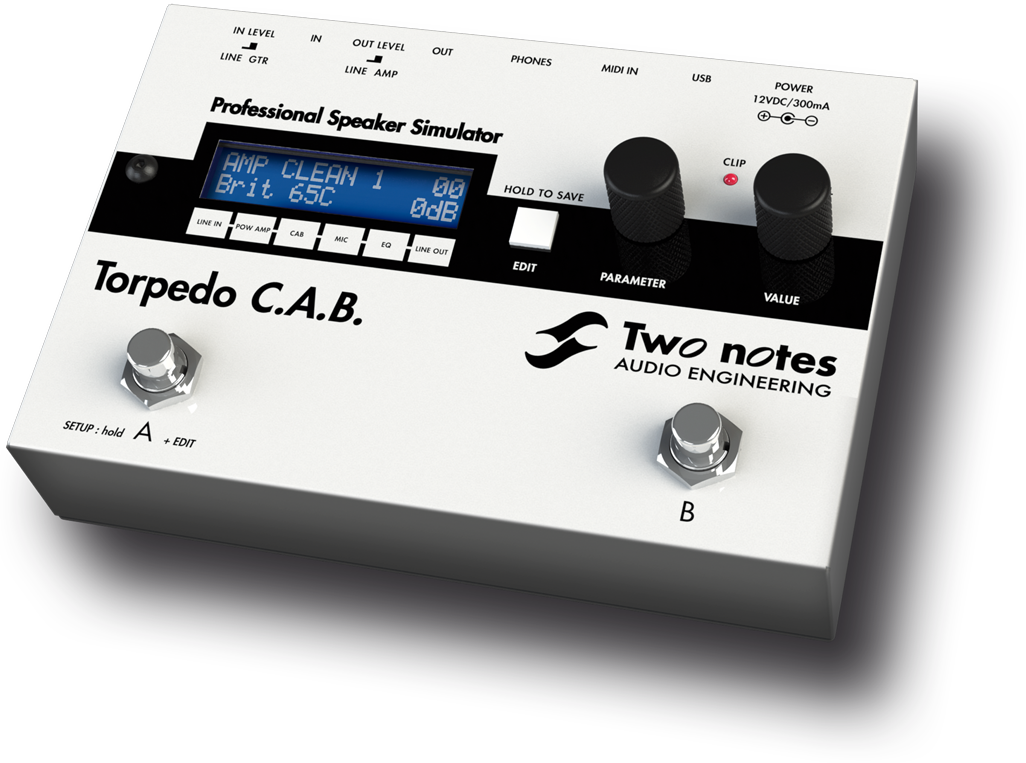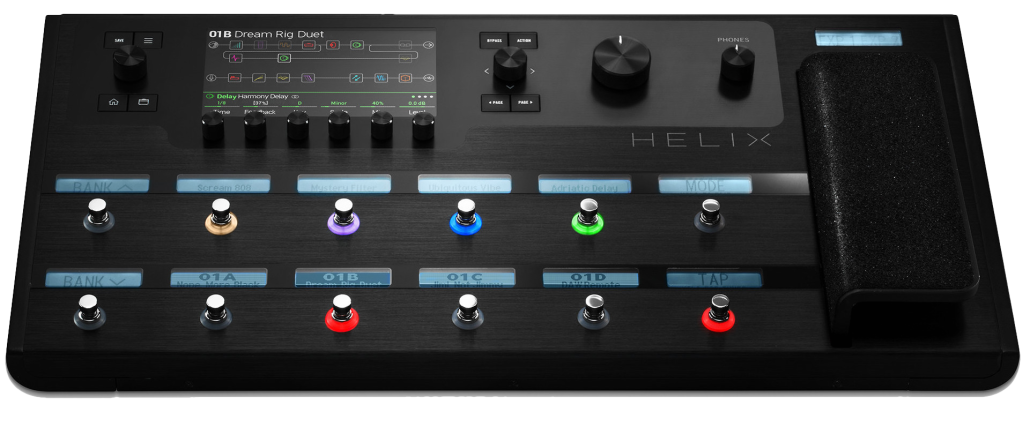They Said it Couldn’t Be Done: How to Rock a Modeler.

I know your boutique or vintage tube amp is amazing. I’ve got one too… Why would anyone want to play though a modeler when you’ve got the real thing, and it seriously rocks?!? Sometimes the choice is taken out of your hands. I’ve worked with all sorts of national tours that want to minimize stage sound while simultaneously increasing consistency and reliability. Sometimes it’s a financial or risk management decision. You can bet that the tour doesn’t want to take responsibility for all of your cool, spendy vintage gear. Here’s the thing: If you’re on in-ears anyway, then you’re not really listening to the sound of your guitar amp. You’re listening to the mic on the amp, which is focused in on a particular part of the speaker, which only captures a portion of that glorious 3D sound that fills the room.
In a previous life I spent a lot of time working with all sorts of artists who, for one reason or another, transitioned from tubes to modelers. During that time I picked up some knowledge that will help make that transition easier, should you be forced into that situation, or have a (gear) crisis of conscience.

Impulse Response Cab Technology or Bust: Great amps are built around great speakers, literally. On your quest for great modeled tone, start with the cab/mic emulation and work your way back. Keeper Profiler, Fractal Axe FX, and Line 6 Helix have all got you covered. If you’re sitting on a POD or something similar? Bypass its internal cabs entirely, and upgrade to a Two Notes Torpedo cab modeler. A big theme in this method is to start with something familiar. Choose a familiar cabinet/speaker combination, and pick a mic setup you know well.
Turn off all the effects: Seriously. They may sound cool, but turn ‘em off. Start with an amp selection that you know inside and out. You may be tempted to try out a load of variations by spinning the dial to see what you get. I recommend you focus in on a particular amp tone. You’ll want a tone that you’re very familiar with, and that you already have on hand. Take some time to narrow it down to one or two selections that seem really close you what you know and love.
Gain, Emulation, and Volume: If you’re playing a low to medium gain (fender/vox/marshall) style amp emulation then dime the emulations master volume (different from the master output volume of the modeler). Most low to medium gain amps are non-master volume style amps. It’s very tricky to introduce master volumes in these old designs without negatively affecting the tone and response of the amp. Similarly, some amp emulators add features that the target amp didn’t have initially. They may seem harmless, but sometimes these features can have an unfavorable effect on the tone, so dime ‘em.
Bring Up the Drive Very Slowly: It might need less than you think it does. For example, I run a tube Fender Twin’s volume on 1. (Turns out a tube Fender Twin actually sounds pretty nasty with the volume on 7). Now, the Twin doesn’t have a master volume. The trick with non-master volume amps is to imagine that they have a master volume that’s already set to 10. The emulation’s drive control can get a bit lost in translation as well. The drive control is going to function like your tube amp’s channel volume. So here’s the missing cheat sheet for non-master volume amps: EMULATED MASTER = 10. TUBE AMP’s CHANNEL VOLUME = EMULATED MODEL’s DRIVE.
Be Sure You’re Not Hitting the Front End Too Hard: Your boost pedal or wireless may have been hitting your tube amp really hard. The modeler might not like that. Check for input clipping. If it clips, dial the output of your signal chain back to keep it clean. There’s good clipping and bad clipping. Tube amps are very good at making even bad clipping sound pretty cool. Digital products don’t always do so well when the input level is off, so read your manual and optimize your input signal for the product.
Don’t Rely On Your Memory: Setup your favorite amp, mic it up and A/B it with the emulation in your in-ears. Dial it in until it’s just right, then match it by ear with the modeler. As we said before, focus in on nailing one tone. Then gig/rehearsal the snot out of that tone, dialing it in just like you would with your tube amp.
It’s Just an Amp Replacement: Use your pedal board for effects, just like you used to with your tube amp. People have the tendency to get on their first modeler and immediately dive into the million possibilities. I urge you to take the time to dial in your core tone before doing that. If you’re looking for long term satisfaction, turn off the bells and whistles and take the time to dial in a core tone that will work well with the pedalboard you already know and love!
Optimize Your Space: If you find yourself missing the spaciousness your old amp allowed, run two different cab models panned left/right. Some of the products listed above will let you run two cab models at the same time. Mix up the second cab, or try a different mic. You’ll find that each combination will naturally emphasize particular notes and harmonics, effectively increasing the spaciousness of the sound.
Try Some Different Mic Models / Cab Models: You might be surprised to find something that really inspires you. Now that you’ve got your equipment really dialed in, try a couple related cab and mic combinations. See if you can find some combinations that really take your sound to the next level. You may get lucky. It’s worth 15 minutes of experimentation to find out that you love the sound of a ribbon mic, even though you’ve been using 57’s your whole life.
Lock it Down: There are so many new options available to you, it’ll be tempting to start messing with them. Be disciplined. Give your dialed in tone a full season to settle in. You’d do that for your favorite valve amp, wouldn’t you? Get to know it, and you’ll grow to love it. Chances are that your band and sound engineer will notice how wonderfully consistent your tone is from night to night. You’re also going to get comments about how well it translates in the mix, and appreciation for lightening the gear load as well. Happy modeling.





